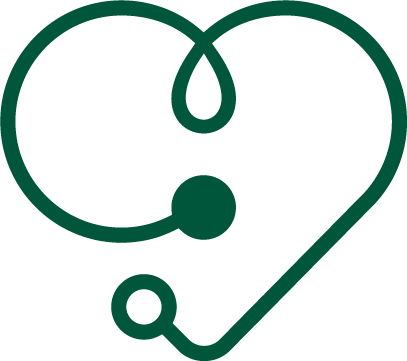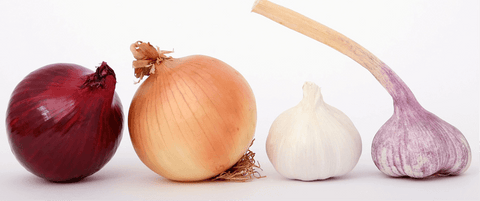Cow’s milk allergy (CMA) is an adverse immune reaction to one or more of the proteins found in cow’s milk. It is one of the most common food allergies in infants and young children. The reaction can occur immediately or within a few hours after consuming cow’s milk and the symptoms can vary from mild to severe.
The symptoms of CMA can include:
- Skin reactions such as hives, rash, or eczema
- Gastrointestinal symptoms such as vomiting, diarrhoea, abdominal pain, or blood in the stool
- Respiratory symptoms such as wheezing, runny nose, or coughing
- Anaphylaxis, a severe and potentially life-threatening allergic reaction.
- In infants, CMA may also cause fussiness, colic, and failure to thrive.
CMA is diagnosed by a healthcare professional through a combination of medical history, physical examination, and allergy testing. The most common tests used to diagnose CMA include skin prick tests and blood tests such as RAST.
The primary treatment for CMA is the elimination of cow’s milk from the diet. In cases where cow’s milk is a major source of nutrition, an extensively hydrolyzed formula or an amino acid-based formula is often recommended.
It is important to work closely with a healthcare professional and a dietitian to ensure that the child’s nutritional needs are met while avoiding cow’s milk.
Are there different types of cow’s milk allergy
Yes, there are different types of cow’s milk allergy (CMA) based on the specific proteins that trigger the allergic reaction. The two main types are:
IgE-mediated CMA: This is the most common type of CMA, and it is caused by an immediate allergic reaction to cow’s milk proteins. The reaction is mediated by IgE antibodies, which trigger the release of histamine and other inflammatory mediators. Symptoms of IgE-mediated CMA can appear within minutes to a few hours after consuming cow’s milk, and can include hives, rash, eczema, vomiting, diarrhoea, abdominal pain, blood in the stool, and anaphylaxis.
Non-IgE-mediated CMA: This type of CMA is caused by a delayed reaction to cow’s milk proteins. The reaction is not mediated by IgE antibodies, and symptoms can appear several hours to several days after consuming cow’s milk. Symptoms of non-IgE-mediated CMA can include eczema, atopic dermatitis, chronic diarrhoea, failure to thrive, and recurrent otitis media (middle ear infection). This type of CMA is more common in infants and young children.
It’s worth noting that some people may have a non-allergic sensitivity to cow’s milk, also known as lactose intolerance, which is caused by the inability to digest lactose, the sugar found in milk. Symptoms include bloating, gas, and diarrhoea but it is not an allergic reaction.
It’s important to have a proper diagnosis by an allergist or a healthcare professional to clarify the type of cow’s milk allergy or sensitivity and design the appropriate treatment plan.
What are the types of reactions to cow’s milk?
There are several types of reactions that can occur in response to cow’s milk. These include:
Allergic reactions: These reactions occur when the immune system mistakenly identifies cow’s milk proteins as harmful and produces antibodies (IgE) to fight them. This can cause symptoms such as hives, rash, eczema, vomiting, diarrhoea, abdominal pain, blood in the stool, and anaphylaxis.
Non-allergic reactions: These reactions are not caused by the immune system and can include symptoms such as eczema, atopic dermatitis, chronic diarrhoea, failure to thrive, and recurrent otitis media (middle ear infection).
Non-allergic sensitivity: Lactose intolerance is a condition caused by the inability to digest lactose, the sugar found in milk. Symptoms include bloating, gas, and diarrhoea but it is not an allergic reaction.
Cross-reactive reactions: Some people who are allergic to one type of protein in cow’s milk may also react to similar proteins found in other mammals’ milk (goat, sheep, buffalo, etc.).
It’s important to note that some people may have more than one type of reaction to cow’s milk. For example, a person with a cow’s milk allergy may also have lactose intolerance. Also, these symptoms can vary from person to person and can vary in severity. A proper diagnosis by a healthcare professional is important for identifying the type of reaction and devise the appropriate treatment plan.
What should I do if I suspect that my child has symptoms of Cow’s Milk Allergy?
If you suspect that your child has symptoms of cow’s milk allergy (CMA), it is important to seek medical advice as soon as possible. Here are some steps you can take:
- Make an appointment with your child’s GP or paediatrician. The healthcare professional will take a detailed history of your child’s symptoms and perform a physical examination.
- Keep a food diary to track what your child is eating and any symptoms they are experiencing. This can help the healthcare professional determine if cow’s milk is the cause of the symptoms.
- Be prepared to answer questions about your child’s symptoms and medical history, as well as any medications they are taking.
- The healthcare professional may also conduct some tests such as skin prick test or blood test (RAST) to diagnose the condition.
- If CMA is diagnosed, the healthcare professional will develop a treatment plan that may include eliminating cow’s milk from your child’s diet, providing an extensively hydrolyzed formula or amino acid-based formula.
- Follow the treatment plan and keep all follow-up appointments with your healthcare provider to monitor your child’s progress.
- Work closely with a healthcare professional and a dietitian to ensure that your child’s nutritional needs are met while avoiding cow’s milk.
It’s important to remember that a cow’s milk allergy can be a serious condition and it’s important to seek medical advice from your doctor as soon as possible if you suspect that your child has symptoms of CMA.
What tests are available to diagnose each type of Cow’s Milk Allergy?
There are several tests that can be used to diagnose cow’s milk allergy (CMA), including:
- Skin prick test: This test involves exposing the skin to small amounts of cow’s milk proteins and observing for a reaction. A positive reaction, such as a raised, red, itchy bump, indicates that the individual is allergic to cow’s milk.
- Blood test (RAST or ELISA): This test measures the level of IgE antibodies to cow’s milk proteins in the blood. A positive test result indicates that the individual is allergic to cow’s milk.
- Oral food challenge: This test involves giving the individual a small amount of cow’s milk to drink and observing for a reaction. This test is considered the most accurate way to diagnose CMA, but it also carries a risk of a severe allergic reaction and should only be carried out by a qualified medical professional.
- Patch test: A patch test is a skin test used to diagnose delayed-type hypersensitivity reactions. A patch containing cow’s milk protein is applied to the skin, and the skin is then observed for signs of an allergic reaction.
It’s worth noting that a positive test result does not always mean that the individual has CMA, and a negative test result does not always mean that the individual does not have CMA. Therefore, the diagnosis must be confirmed by a healthcare professional, taking into account the patient’s symptoms, test results and medical history.
It’s also important to remember that some people may have more than one type of reaction to cow’s milk, so it is important to be evaluated by a healthcare professional who can determine the type of reaction and devise the appropriate treatment plan.
What are the alternatives to Cow’s milk
There are several alternatives to cow’s milk that can be used for people who have cow’s milk allergy (CMA) or lactose intolerance. Some examples include:
- Soy milk: This is a popular alternative to cow’s milk, and it is made from soybeans. It is a good source of protein and is often fortified with vitamins and minerals.
- Almond milk: This is made from ground almonds and water. It is low in protein and calories, but it is a good source of healthy fats.
- Rice milk: This is made from ground rice and water. It is low in protein and fat, and is a good source of carbohydrates.
- Oat milk: This is made from oats, water and other ingredients. It is low in protein but high in carbohydrates and dietary fibres.
- Hemp milk: This is made from hemp seeds and water. It is a good source of protein and healthy fats.
- Coconut milk: This is made from coconut meat and water. It is high in saturated fat, but it is also a good source of healthy fats, and can be used as a dairy substitute in cooking and baking.
- Pea milk: This is made from yellow peas and water, it is a good source of plant-based protein, and it is also low in fat and calories.
It’s worth noting that these alternatives may not be suitable for everyone and it’s important to read the label and check the nutritional values before using them. Also, some people may have an allergy or sensitivity to some of these alternatives. Therefore, it’s important to consult with a healthcare professional or a dietitian to determine the best alternative for you or your child.
What advice can you give for travelling with an infant who is allergic to Cow’s milk
Travelling with an infant who has cow’s milk allergy (CMA) can be challenging, but there are several steps you can take to make the experience as smooth as possible:
- Plan ahead: Research the availability of alternative milks and baby foods at your destination and make sure to pack enough for the trip.
- Communicate with the airline: Inform the airline of your child’s CMA and request special meals or accommodations if necessary.
- Pack your own food: Bring along your own alternative milks, baby foods, and snacks that your child can eat.
- Carry emergency medication: Make sure you have emergency medication, such as antihistamines (or epinephrine if required), with you in case of an allergic reaction.
- Bring your child’s medical records: Make sure you have your child’s medical records, including their allergy action plan, with you in case of an emergency.
- Be prepared for language barriers: If you are travelling to a foreign country, it might be useful to bring a translation card that explains your child’s CMA and the foods they can and cannot eat.
- Be vigilant: Always read labels and be aware of the ingredients of the food that you are offered, even if it appears safe.
- Consider cooking your own meals if you are staying in a place with a kitchen.
By following these steps, you can help ensure that your child’s CMA is managed properly and that your trip is as enjoyable as possible. Remember to always consult with a healthcare professional before travelling with an infant who has CMA.
References
- Allergy UK. Travelling with an infant. Accessed January 16, 2023. (https://www.allergyuk.org/resources/travelling-with-the-allergic-infant-factsheet/)
- www.bda.uk.com Milk Allergy and Infant Formula Guidelines. Accessed January 16, 2023. (https://www.bda.uk.com/resource/milk-allergy.html)
- The Milk Allergy in Primary Care (MAP) Guideline 2019. Accessed January 16, 2023. (https://gpifn.org.uk/imap/)












